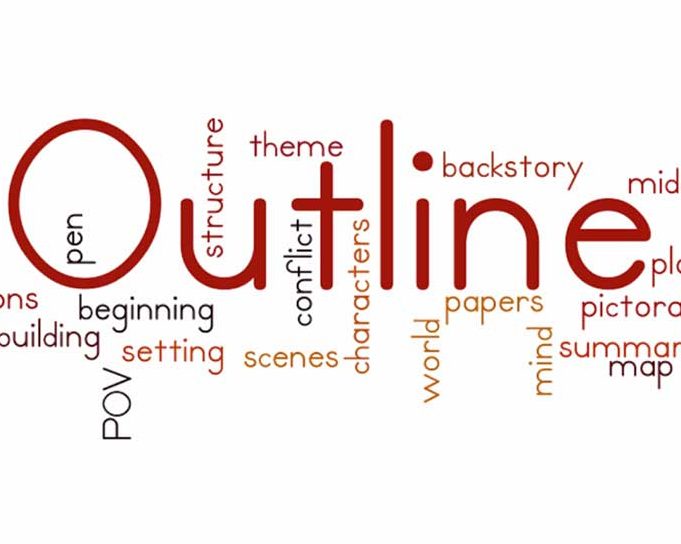What You Might Not Know about Scene Middles
As we continue our look at scene structure and get into middles, I’d first like to talk about overall scene type. There are no set rules to how to construct a scene, how a scene should start or end, or how long it should be. But one of the best things a writer can do with scenes is vary them.
Start one scene in the middle of dialogue, then pull back to show the setting and situation the character is neck-deep in. Then start the next scene with action. Then the next with a brief bit of internal thought or narrative. Variety keeps things interesting.
However, with scene length, that might create some disjointedness, if you have a three-page scene or chapter followed by a twenty-five-page scene, then a twelve-page scene. Studying novels in your genre should give you a good idea of scene/chapter length, and I highly recommend taking the time to do so.
I’ve built an entire online course around targeting genre because I feel it’s so important to write books that can easily fit into genre categories to sell well. Learning how to identify the key markers for a niche genre is crucial, and that includes a deep look at scene and chapter length. (If you’d like to learn more about this course, it’s open for enrollment now, launching March 1, 2016. Check out the course page here!)
We’ve gone over scene beginnings and hooks, but haven’t talked about these different ways you can structure scene openings. Regardless of what kind of opening you use, remember these key points we went over in previous posts:
- Start in real time, in the middle of something happening
- Start just a bit before your important high moment (that “time” will vary depending on the importance of the scene and where it is positioned in your novel)
- Establish the POV character quickly and stay in that character’s head the entire scene
- Have time move forward, in real time
- Use a strong opening hook—if possible with every scene
- Pay attention to the capsule of time you are creating
From scene openings we move into scene middles, or muddles. Since our objective for a scene is to build to the key moment near the end of that scene, it should be easy to guess what a scene’s middle should be all about.
Scene Middles Need to Be Purposeful
Just as with any section of a scene, you don’t want your middles to show characters aimlessly wandering, doing unimportant things, having mundane conversations. The middle section is not filler. It isn’t the place to stuff in comings and goings and boring activity just to take up space until you get to the key moment.
Really, a lot of scene middles are like that. As well as scenes in the middle of novels. Literary agent Donald Maass says, “You would be surprised in how many middle scenes in how many manuscripts there seems to be no particular reason for a character to go somewhere, see someone, learn something, or avoid something.” Remember: scenes are mini novels. Just as you don’t want purposeless middle scenes in your novel, you don’t want purposeless middles in any of your scenes.
Middles of scenes are particularly challenging for many writers. There is a fine art to writing great middles, but the secret lies in the high moment and the character’s objective or expectations. Why is that?
Middles Should Be Packed with Conflict
In each scene, at the key moment near the end, your character is going to learn something, understand something, find something, witness something. All the while, she has a goal for the novel, an objective. A core need, dreams, fears, hopes, worries. In each scene there should be inner conflict on every page, if possible, and that inner motivation is driving the heart of every scene.
All of this may not be front and center, but you, the author, should be aware of it, and so should your reader, if you’ve done a good job writing your novel.
So how does this pertain to middles? Let’s say your character’s goal is to stop a friend from being self-destructive. She’s worried her friend is going to do something really stupid and harmful. Maybe Lesley is out with her friend Renee, who is quickly and deliberately getting drunk. Maybe the high moment will show Lesley taking Renee’s car keys and dumping them into the giant fish tank next to the bar, and maybe Renee is going to slap Lesley, or knock over the tank trying to retrieve her keys.
The important thing here is to know what attitude Lesley has in this scene and what her objective is. If your goal is to portray inner and/or outer conflict on every page (which is what I urge writers to aim for), and keep the stakes high and present, you can come up with ideas for your middle. A building argument as they eat. Lesley worried if she is too forceful she will lose Renee’s friendship, but if she is too weak, her friend might get hurt or accidentally kill someone while driving drunk. The embarrassment she struggles with as Renee makes a scene and Lesley tries to keep her restrained.
Infusing the scene with this inner/outer conflict and heightening the tension by keeping the stakes in the forefront are the two best ways to have strong middles.
Middles Reinforce What’s at Stake
What if your character is alone, trying to find a clue or a way to escape a building? His inner thoughts and the narrative can reveal that inner conflict—his fears of failing to find that clue or getting out alive. What are the stakes in that scene? What is he risking? What might he lose? What will the consequences be if he fails? Tension is created by the character’s tension, and the middle of a scene is where that tension gets ramped.
Just showing a character going from one place to another, with some objective, is not going to create a strong, compelling middle section of a scene if it doesn’t have those elements of inner conflict and present stakes.
This doesn’t mean every scene in a novel has to be action-packed or full of danger. But to some degree, there should be something at risk, something at stake, whether it’s a friendship, self-esteem, or a feeling of accomplishment.
Middles Should Muddle, Not Put Readers to Sleep
On a more visible or tangible level, middles are where you can complicate or exacerbate a situation. You can bring in more problems, a setback, a reversal, a twist. A character might presume something, only to find she was completely wrong. By building her expectations in one direction throughout the scene, then having them wrong, you create a building tension in that middle that helps the high moment pack a punch.
A woman goes to the park to meet her boyfriend. He texted her, saying he has something important to tell her, but he only has a few minutes before he’s leaving town on business. She thinks he’s going to propose, finally. She hurries, excited, out the door and trips and twists her ankle. She hobbles to her car, then it won’t start. She hails a cab—no way is she going to miss the most exciting moment of her life, swollen ankle and all.
Everything seems to be trying to stop her from making that appointment, but she gets there, and he’s pacing in front of the beautiful fountain on a sparkling spring day. The perfect setting and weather for a proposal. But then, he takes her hand and starts with an apology, and one look in his eyes tells all. He’s breaking up with her.
Don’t take the easy route and let your middles sag, hoping your high moment will make up for whatever is lacking. That’s a cop-out that doesn’t satisfy readers. Don’t ignore your middles or use them as a section to move your character from one place to another. Find ways to heighten tension, raise stakes, worsen inner and outer conflict, all leading purposefully to your scene’s ending.
What problems do you have with scene middles? Has this post given you some ideas on how to fix some of your scenes?
Pull out one of your favorite novels and read a random scene. Note what happens in the middle section of the scene. Are there complications? Does the character face inner and outer conflict? Share some insights about what you noticed and what worked to make that middle strong.
Want to nail scene structure?
Be sure to download my scene checklist and my scene template.
At whatever stage you are in with your novel, you can benefit by an outline critique. I charge this service by the hour, and you can be sure you’ll get a thorough analysis and critique of your story. Submit an outline for just a few chapters or your entire story. Your story will greatly benefit from this, and I bet you’ll not only be surprised at what you’ll learn through this outlining process, you’ll become a better scene writer.
Are you willing to take the challenge? Contact me to set up a date for your scene outline review.
For a terrific example of a scene outline using my template, download this client’s first act here (with permission).
Feature Photo Credit: mk is Watoo via Compfight cc












very helpful series! Some scenes have a lot of tension/conflict (I write in women’s fiction) but is there a place for the “breathing space scene” (maybe only 3-5 pages) where you can show women’s friendship, a party, or some vacation experience that isn’t necessarily loaded with conflict?
Absolutely! I have a post coming up soon on this topic and the need for writers to understand the action-reaction-action cycle. Very important to have your character process. However, the tension due to conflict (mostly inner) can be on every page. Especially in reflective moments. Those are the moments in which your character is trying to understand, make a choice, weigh options, decide how she feels, etc. This is all heavy conflict!
Certainly there can be light, fun moments. Life is like that, and our stories should reflect life, but if your characters are just sitting around drinking and soaking up the sun, talking about mundane things, how interesting do you think that will be for readers? How many pages would you read in a novel that went on like that and didn’t bring in some tension (conflict). So think about that!
Thank you for clarifying what a scene middle should incorporate. I am using your scene template to analyse my novel scene by scene ad nauseum, but did not really understand what you meant by middle. Now I have to go back to the start! Lol. At least I am only
6 scenes in. Thanks once again for your blog. I am a loyal and devoted fan!
I’m so glad this is making sense for you. I have some more posts coming up that I think you’ll like! And thanks for the kind words about the blog. I try (hard!) to provide good content to help writers!